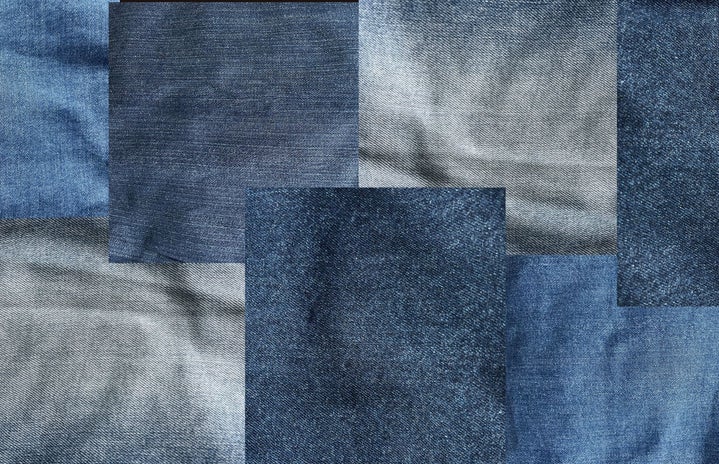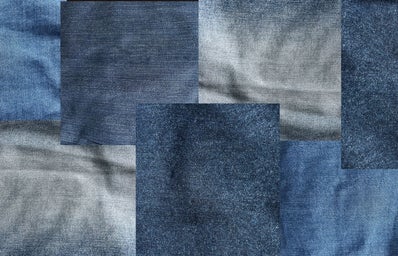Many fashion trends come and go but one that has truly stood the test of time is a pair of denim jeans. Initially worn by miners in the 1950s, a good pair of jeans can be found in any closet today! High-waisted, skinny or bell-bottomed in a myriad of blues; a pair of jeans is that friend you know you can rely on for a comfy and chic day or night out. Although there appears to be a pair of jeans for every occasion, the one place you can’t wear them to is the workplace.
When I started working for a company that conducts drama programmes for primary schools, I remember asking my superior if there was a dress code I should follow. No prizes for guessing what I was not allowed to wear. Jeans. As I struggled to have enough outfits for a week of work, it was the first time I realised that I wore jeans way too often but was that necessarily a bad thing?
Curious about what the dress codes were like for others, I asked my friends if they could wear jeans to their workplace. While a couple said jeans were commonly worn around the office, others said jeans were a no-go due to the nature of their industry which required them to meet with clients. What I found particularly interesting was the personal choice to stay away from jeans despite a lax office dress code among many friends. When asked why, one said “I think it’s a bit too casual/street” and another said, “doesn’t feel professional to me […] I’d want to dress more profesh”.
Although one friend said she could only wear jeans on Fridays, it was clear from their responses that jeans needed a new public relations agent STAT! This was a PR crisis. A pair of jeans appears to be associated with being too casual as opposed to formal dress pants. But how could pants made from a material that has walked countless haute couture runways for Schiaparelli and Jean Paul Gaultier be considered unprofessional? And how could such an expensive pair of trousers be seen as inferior to dress pants?

The word “jean” was used to describe a twill cotton cloth for trousers in the 1800s. As this fabric was manufactured in the French town of Nîmes, blue jeans became synonymous with the word “denim” (Bleu de Nîmes in French which translates to Blue of Nîmes). When one thinks of a classic pair of jeans, the brand Levi’s instantly comes to mind and that’s because they were the first to patent the garment in 1873. Miners and other labourers were in need of a hard wearing fabric with pockets that did not rip easily. Jacob Davis and Levi Strauss set out to make the perfect pair of work pants with blue denim and copper rivets to reinforce pockets. After Strauss and Davis’s patent ended in 1890, many others started to reproduce the garment. In fact, jeans were standard issue for war workers during the First World War.
Jeans slowly transitioned from workwear to what Vogue dubbed as “Western chic” in the 1930s when the trousers made their appearance on rugged and charming cowboys in Hollywood films. Things seem to be looking up for these blue pants! Well, that was until they became associated with the youth rebellion in the 1950s. The movies On The Waterfront starring Marlon Brando and Rebel Without Cause with James Dean had their bad boy characters don flattering pairs of jeans, resulting in the association of the trousers with sex appeal and anti-establishment values.
To make matters worse, the jeans symbolised counter culture as they were worn by hippies and anti-war protestors in the 60s and 70s to show solidarity with the working class. As jeans could be embroidered and have patches, they became politically charged with ideas of solidarity, egalitarianism and individuality which is probably why they were banned from high schools during that period.
Blue jeans made another comeback (more than some K-pop groups) in 1976 when Calvin Klein shocked the audience by having the garment on the runway for the first time. This renaissance of blue jeans saw its commercial success as brands such as Gloria Vanderbilt and Guess entered the jean market and made them look like they oozed sex appeal. Jeans are still associated with racy images which may be why they may be deemed inappropriate at the workplace.
From working clothes to symbols of disobedience to now fashion items, denim has such a long and complicated history which is its double edged sword. I think that because jeans are associated with so many ideas and movements, the trousers become more than just stitched fabric on one’s body. A pair of jeans are a conversation one may not want to have when they need to focus on their work. On the other hand, formal dress pants offer a blank canvas. They are that quiet coworker that leaves you to your own devices giving it a “professional” quality.
While you won’t see me in a pair of denim jeans at work no matter how good they make me look and feel, best believe I will be wearing them at every other chance I get.


